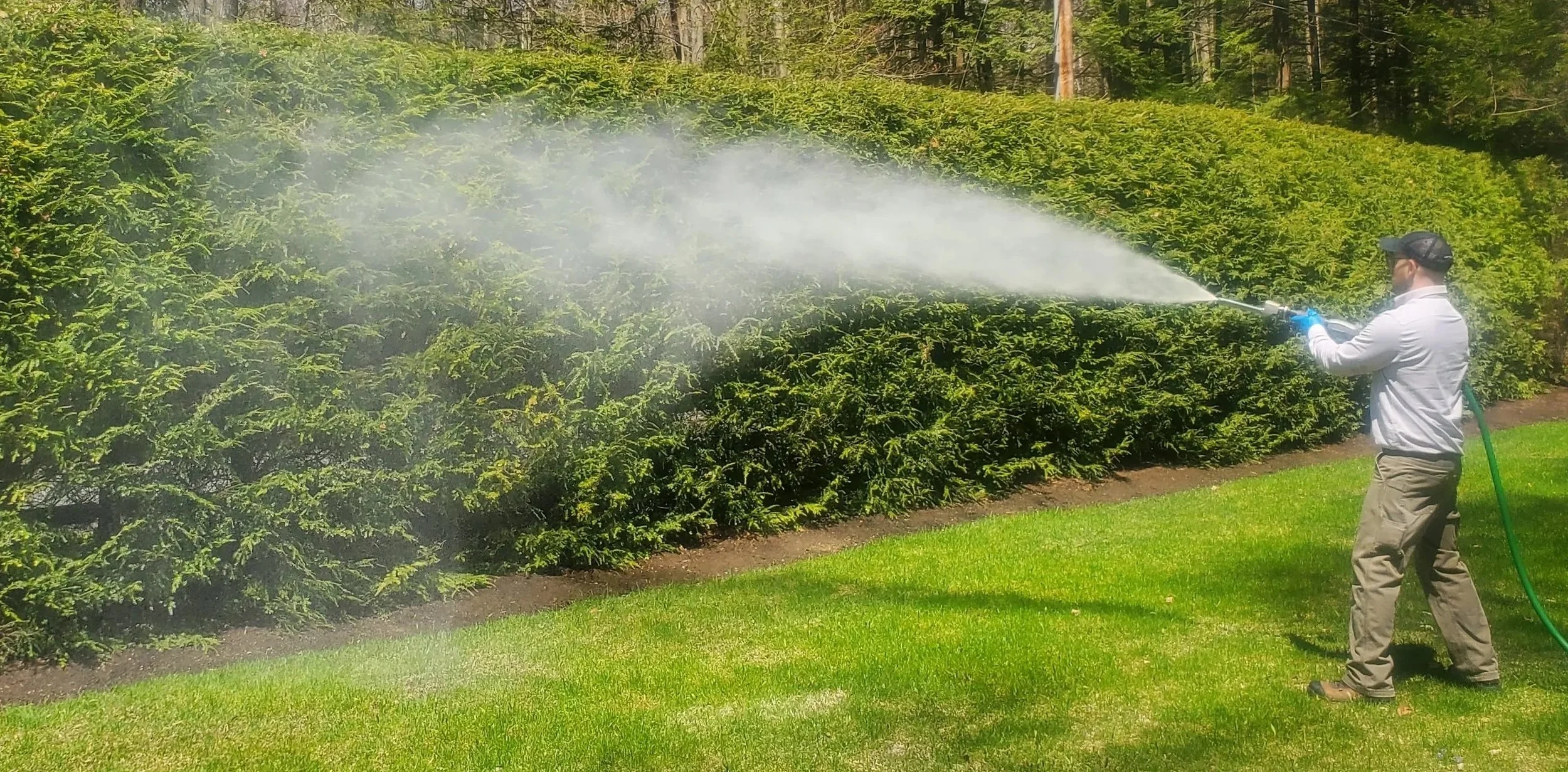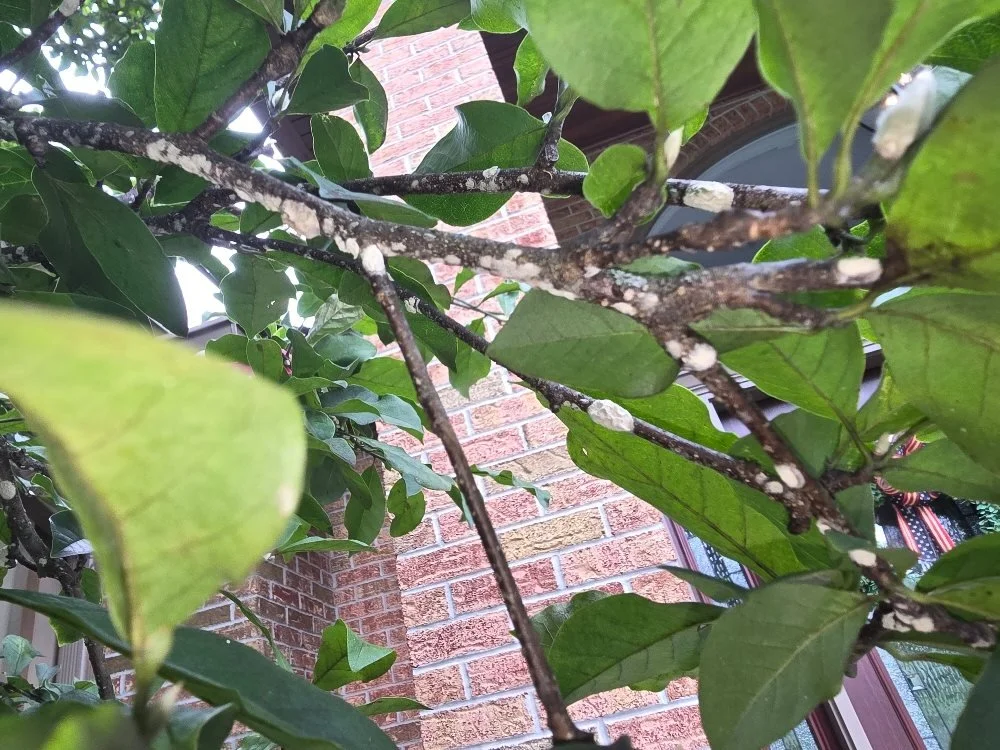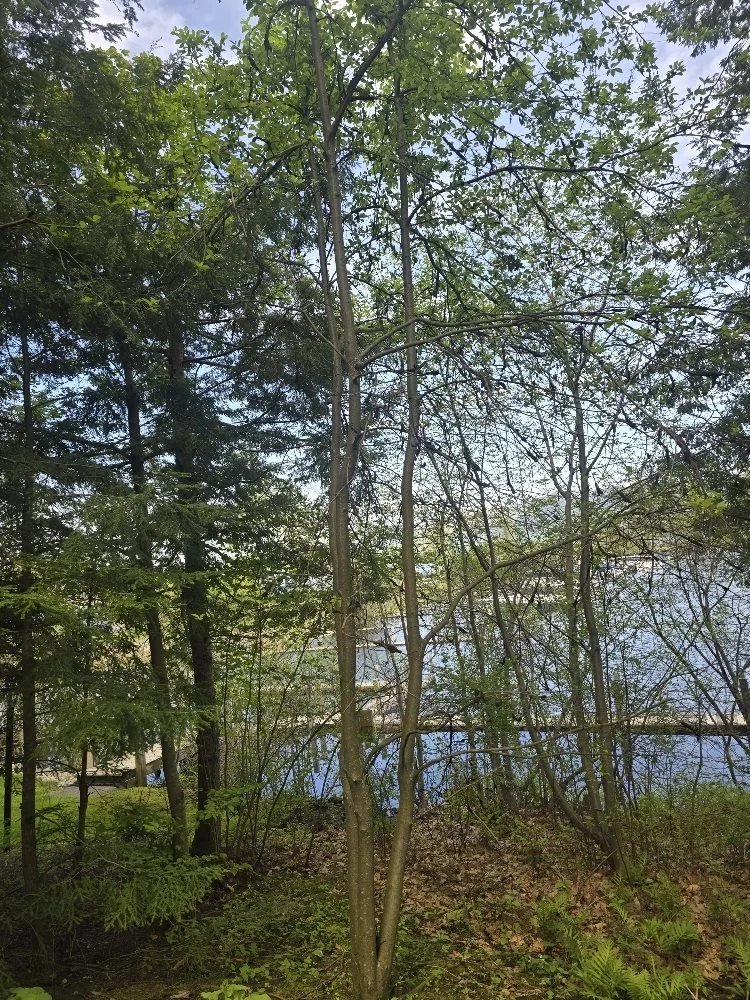tree health
meet your arborist
Ryan Robinson, Certified Arborist #NY-6922A
Ryan Robinson is a key member of Why-Knot Services LLC, a family-owned and operated business serving Warren, Washington, Saratoga, and Essex counties. With a Bachelor of Science in Applied Biology, Ryan earned his NYSDEC Certified Commercial Pesticide Applicator License and is an ISA Certified Arborist. Ryan developed his expertise through a five-year mentorship with a highly respected certified arborist in the North Country. His strong academic foundation and 10 years of hands-on field experience has helped establish and grow the pest control and tree health care divisions of the company.
As a licensed and fully insured applicator, we can treat in the following categories:
3a – Ornamental and Turf
Ornamental shrubs - Root feeding and fertilization
Tree spray and injection to promote tree health (Hemlock from the Woolly Adelgid)
At Why-Knot Services, we’re committed to helping you keep your property healthy, beautiful, and protected from damaging pests. We welcome the opportunity to earn your trust—and your business.
what is an arborist?
An arborist is a professional who specializes in the care of trees, shrubs and other woody plants.
Ryan will:
Identify risk & assessment
Identify & treat diseased trees
Inspect trees & shrubs
Evaluate the health of trees, care & maintenance
Pest Management: Apply pesticide & control insects
Maintenance: Maintain soil condition to ensure trees are healthy, safe and attractive
Has knowledge of tree biology & anatomy
Commercial and Residential tree health SOLUTIONS
Our tree health professional is committed to helping take care of your trees and shrubs to ensure your property remains beautiful and healthy. We provide a personal touch to each client we work with, through our customer relationships, our informative science-based knowledge, and our quality workmanship.
We proudly serve Warren, Washington, Saratoga, Hamilton, and Essex Counties, including the North Country.
It takes a little preventative care to keep most landscape troubles at bay. Maintaining healthy plants today, can prevent the costly disease and insect problems of tomorrow or the need to replace that plant.
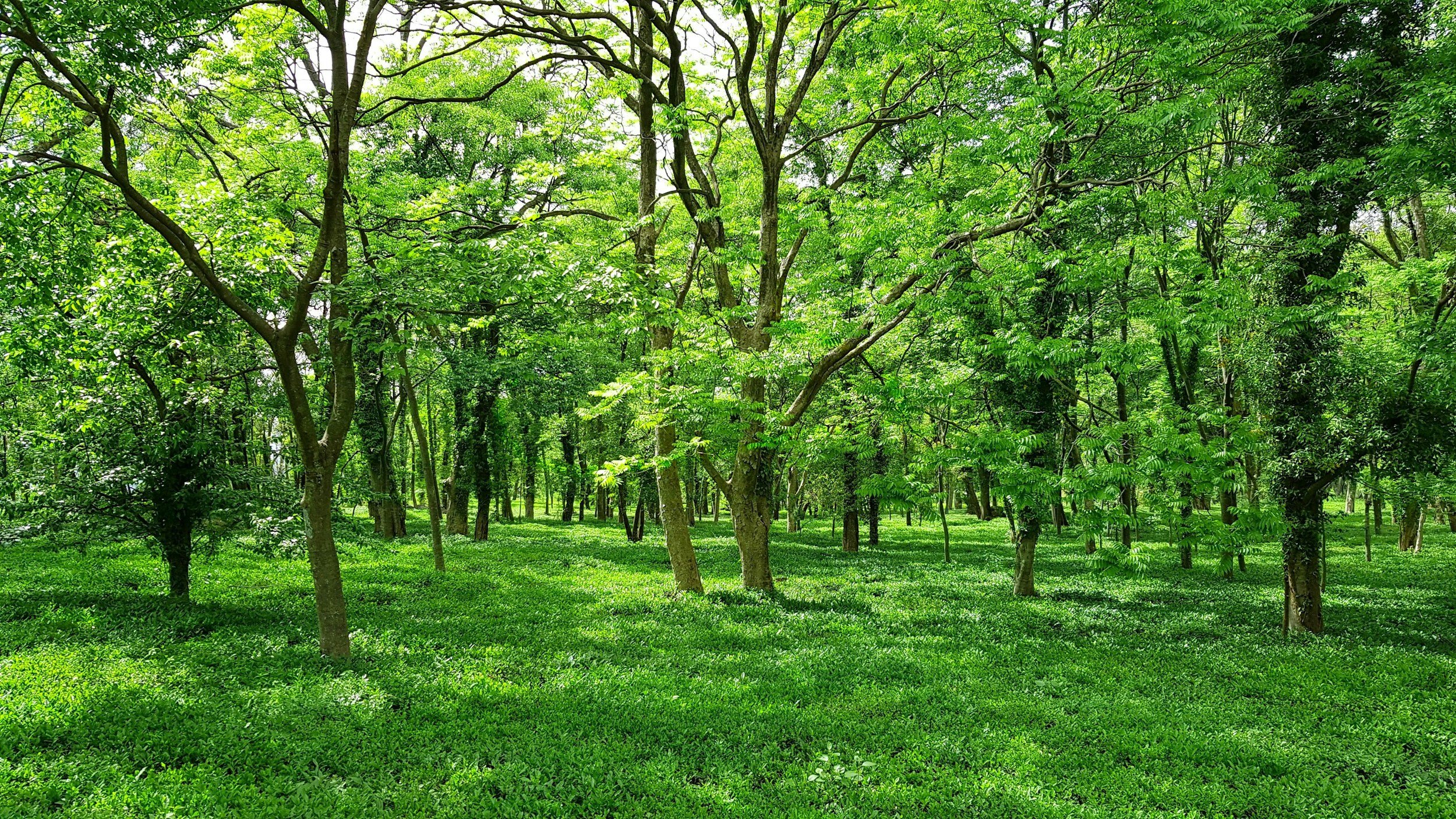
WE OFFER
A professional evaluation of your trees and overall condition of your landscape plantings
A personalized comprehensive approach to tree health care that considers regional pests and diseases, local weather and climate impact
Free estimates that offer a treatment program that is both safe and cost effective.
Treatments are completed at the appropriate time/cycle of plant development
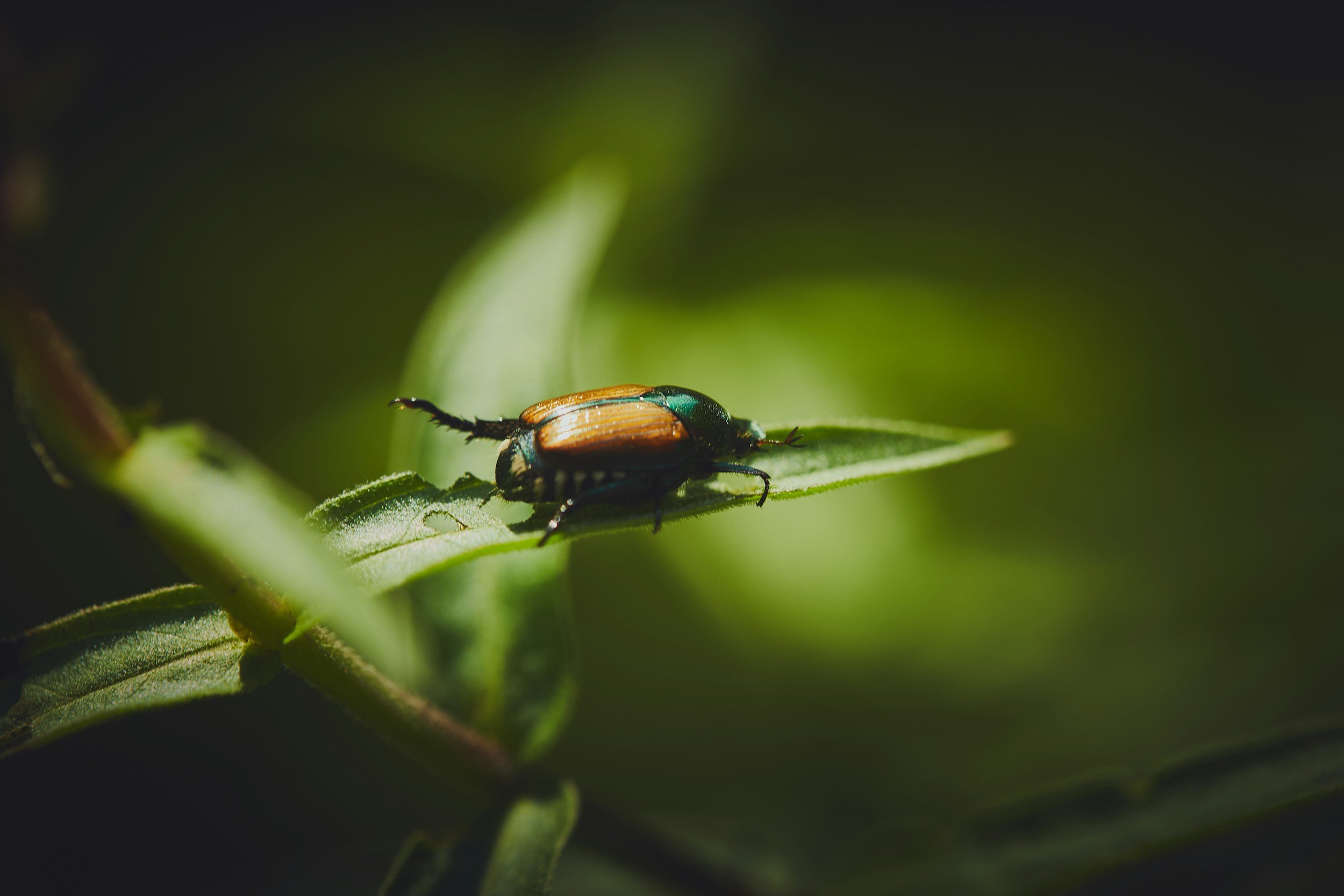
Common insects and tree diseases
-
Apple scab is a fungus that causes the leaves to drop during the months of July & August. This occurred because the fungus entered through the blossoming stems of the tree in the middle of April to the end of May. Proper pruning and fungicidal sprays will prevent the fungus to grow in future seasons. We recommend a series of three sprays; starting in April ending in June.
-
Birch tree canker is a fungus. This fungus occurs when there is excessive moisture/water past the bark line and saturates the hard wood. The fungus grows within the layers of the hardwood allowing for deformed shapes to occur around or on the tree. Examples of this are burrs, bulging joints, green discharge and black bark deformations. To benefit and remove the deformations of the three we suggest a dormant oil to promote new bark growth and fungicidal spray to prevent and hinder any further fungus growth. However, if a green discharge is present a micro injection of fungicide is recommended to remove any further fungus growth within the tree.
-
Emerald Ash Borer is an invasive species from Asia. They are the length of your thumb, bright green in color and reside most often in the crown of the tree. they burrow small pin size holes throughout the tree. these burrows form a “S” shape pattern. To prevent this insect from harming your tree we recommend treating your trees with a general insecticide through micro injection, Basal Bark spray, or root drenching.
-
Hemlock Wooly Adelgidis an invasive aphid like insect that can significantly damage hemlocks in a short period of time, 1-2 seasons. The most noticeable characteristic is the white dots that reside under the branches, typically 30 ft in the air. In order to protect these trees we advise a preventative spray with dormant oil or neem oil during post dormancy and reproductive cycles (May-June, July-Aug.,). The alternative preventative treatment that is longer lasting is through micro injection, basal bark spray or root drenching with insecticide to systemically protect the entire tree for a longer period of time. (2-7 years).
-
Magnolia Scale is a soft scale insect that punctures the tree causing sap, mold and other insects to form on and around the tree. Magnolia scale also can appear as white waxy and slightly furry dime sized dots that ooze a clear sticky substance if ruptured. If left untreated serious damage can occur to the tree. Scale begins to be most noticeable in the months of July and into August. We recommend an insecticide spray to limit the scale growth in the summer of discovery. Then in the following year a single preventative spray of dormant oil in the spring with a minimum continuation of 2 years is required to minimize scale.
-
Jumping worms are an invasive species that alter soil qualities and make it inhospitable for plants, trees, and lawns to grow. The most noticeable characteristics are the white band around there body, coffee ground looking soil, and how excessive they are at being slimy and wiggly. These worms are in their largest numbers in the months of September into October. We recommend a soil amendment fertilizer with tea saponin. Tea saponin is a natural compound that has been found to hinder the number of jumping worms in a given area.
-
Gypsy Moth is a highly destructive caterpillar which was accidentally introduced to the US in the northeast. It has spread to the center US and Mid-Atlantic states and continues to spread further each year. The caterpillar is distinctive for its rows of blue and red/orange spots. It will feed on many species of trees with a preference for oak and aspen. Its feeding damage is typically of caterpillars where the leaf is chewed, with early-stage caterpillars chewing holes in the leaf and later stage caterpillars consuming the entire leaf, leaving the tree defoliated or very thin. The best evidence of Gypsy Moth infestation is the presence of the caterpillar itself.
-
Japanese Beetle is an invasive insect introduced to the US in 1916. It is found primarily east of the Mississippi River and isolated pockets in more western states. The adult is 8-10 millimeters long, with a shiny green metallic thorax and copper/bronze-colored wings. It will feed on a variety of trees, including maple, linden, apple, crabapple, pin oak, birch, plum and cherry among others. The adult beetle “skeletonizes” the leaf, consuming the tender leaf tissue and leaving the veins behind, causing the leaf to have a lace-like appearance. The best evidence for Japanese Beetle infestation is the presence of the beetle itself.
-
Rhizosphaera Needle cast is a fungus that can cause extensive defoliation of spruce and fir, especially where the trees are grown out of their natural range. In spring or early summer, new needles at the branch tips are green, and the older needles turn brown to purple. Spores are dispersed by rain splash or by the wind from infected needles to healthy susceptible growth where infection occurs. Look closely at both green and discolored needles, tiny black bumps can be seen arranged in neat rows on infected needles. These are the spore producing structures of the Rhizosphere fungi. Discolored needles fall off in late summer to fall. Infected trees have few needles near the trunk and look thin, or see-through. Damage typically starts on the lower branches and moves up the tree. If the majority of needles are infected for 3 to 4 years in a row, the branch will die.
-
Grubs are voracious feeders, and in most cases are the larvae of Japanese beetles, annual white grubs, or green June beetles. After the beetle’s mate during late spring/early summer, the females lay eggs in the soil. Once the eggs hatch, the grubs feed in the soil during the warm days of summer. As the soil temperature begins to fall, they burrow deeper to spend the winter, sometimes to depths of 4-5 feed below ground. Depending on the weather, they may be higher or lower in the soil when spring arrives. Then they will be back up near the surface and feeding on grass roots again. White grubs eat organic matter, including the roots of plants. Therefore, damage first appears to be drought stress. Heavily infested turf appears as an off color, gray-green, and wilts rapidly in the hot sun. Continued feeding will cause the turf to die in large irregular patches. The tunneling of the larvae cause the turf to feel spongy under foot and the turf can often be rolled back like a loose carpet.

